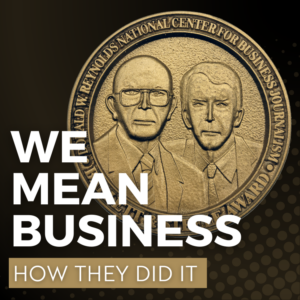According to a Congressional Budget Office analysis, the federal minimum wage is $7.25 an hour for most workers. This federal rate hasn’t changed since 2009, though 29 states have a higher minimum wage than the federal rate, according to this interactive map from the U.S. Department of Labor.
Currently, D.C. holds the highest minimum wage of $14 an hour, while 23 states–including Alabama, Georgia, Kentucky, and Texas–abide by the federal rate.
Puerto Rico has the lowest rate of $6.55 per hour, below the federal rate, under the Fair Labor Standards Act (FLSA). It is linked to a Consumer Price Index and re-evaluated every year to account for inflation.
In 2019, 18 states have raised minimum wage levels, either to adjust for the cost of living or due to the passage of legislation or ballot measures, according to The National Conference of State Legislatures. Significant state measures include New Jersey and Illinois, which will gradually increase the state minimum wage to $15 an hour by 2024 or 2025. California and New York were the first states to gradually increase state wages each year to $15. (However, these yearly wages can be waived under extenuating circumstances, such as job or sale declines.)
Raise the Wage Act
Also known as the Raise the Wage Act, this bill passed the Democratic-majority House on July 18, 2019. Its goal is to double the current federal minimum wage to $15 by 2025, which, in the unlikely event it passes, will mark the “the highest increase ever,” according to Vox. (You can read the full text of the bill here.)
Only three Republicans voted for the bill, with 231 members voting for and 199 opposed. President Trump has already stated that in the unlikely event the bill passes the Senate, he will not sign it into law. (Republican Senate Majority Leader Mitch McConnell opposes the measure as well.) White House economic advisor Larry Kudlow has been quoted saying the measure is “a terrible idea,” particularly for small businesses. He and other critics note that wages vary by state depending upon the cost of living and local politics. (Kudlow did, however, applaud Amazon for raising its wage to $15 an hour for full-time and part-time workers.)
Raising minimum wage: Harm or Help?
The consensus on this issue is varied, with mixed opinions on the long-term consequences by economists, though two-thirds of Americans support raising the federal minimum wage to $15 an hour.
For instance, a National Bureau of Economic Research study, where its authors studied 158 instances of state minimum wage changes between 1979 and 2016, concludes “the overall number of low-wage jobs remained essentially unchanged following the increase,” except in jobs that can be moved overseas, such as manufacturing.
Overall, job growth may slow, but will eventually break even, according to an analysis done in Seattle, which raised its minimum wage to $15.
However, Boston Globe op-ed worried about small businesses being unable to make profits, due to prices increasing and customers staying away as a result. (There is a report about its effect on small businesses in New York City.) In addition, the Congressional Budget Office reported a danger of the loss of 1.3 million jobs nationwide.
On the other hand, the Congressional Budget Office also says that the measure will lift some families out of the poverty level. Two-thirds of the working poor would receive a pay increase, with an extra $3,000 a year, which would help workers such as food service employees and teachers, according to the Economic Policy Institute.
Though minimum wage workers are commonly thought to be teenagers working at their first summer job, this is not the case. The Economic Policy Institute reports that less than 10 percent are teenagers; more than half of these workers are adults between the ages of 25 and 52. More than half are women and work full time, with college experience and children.
Groups such as people under the age of 20 for the first 90 days of employment, tipped employees like bartenders and servers, and independent contractors can be paid below the minimum wage. Tipped employees are dependent on tips, which may fluctuate and are not reliable.
In addition, the Raise the Wage will benefit disabled workers and workers of color, as these groups are paid less than the current federal minimum wage. Disabled workers earn a subminimum wage, some even earning as little as 4 cents an hour. Black and Latino workers, particularly women, are paid less than their white male coworkers, according to PEW Research.
Other proposals to close the wage gap
Although women are increasingly completing higher education and entering the workforce at a higher rate, they still face a gender pay gap, an issue brought to attention from the U.S. women’s soccer team to various Democratic politicians. Though such measures such as the Lilly Ledbetter Fair Pay Act of 2009 have passed, women are still discouraged from negotiating wages and comparing coworkers’ wages, as well as facing penalties from taking maternity leave. Women employees are traditionally undervalued as well, according to The Washington Post.
Democratic presidential candidate Andrew Yang is also proposing a universal minimum wage, also called the “freedom dividend.” A major part of his platform is giving all Americans over the age of 18 $1000 a month, proposing a “trickle-up” effect, but concerns remain about the $3 trillion cost and disproportionately help already financially-secure individuals.











